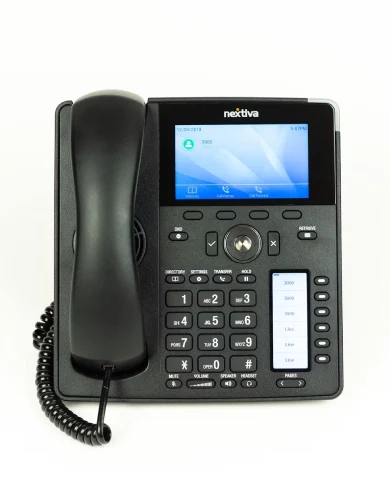Understanding Openreach’s role in the UK broadband infrastructure
Openreach provides the infrastructure behind most of the UK’s broadband connections. It is the UK’s largest broadband network and its full fibre network now reaches over 13.8 million homes and businesses.
As one of the key players in telecommunications, Openreach is central to the rollout of fibre optic broadband across the country. Its work supports everything from home internet access to large-scale business connectivity.
In this guide, we take a closer look at how Openreach works, why it matters, and the role it plays in keeping the UK connected.
How does Openreach work?
Openreach runs the network that delivers most broadband and phone services across the UK. It manages the physical infrastructure, including fibre cables, copper lines, cabinets and poles, that connect homes and businesses to the internet.
Openreach plays a critical role as the Universal Service Obligation (USO) provider for the UK. It is responsible for ensuring everyone can access a decent and affordable broadband connection using the Openreach network, regardless of location.
Here’s how Openreach operates behind the scenes:
Building the network
Openreach is expanding broadband access across the UK. This includes rolling out full fibre to new areas, installing new infrastructure in business parks or new developments, and supporting providers that want to bring better broadband to their customers.
Maintaining the network
Once the network is in place, Openreach keeps it running. Engineers carry out repairs, fix faults, and upgrade old lines to improve speed and reliability. If your broadband provider raises a technical issue that turns out to be with the physical line, it’s Openreach engineers who resolve it.
Supporting the last mile
The “last mile” is the final section of the network that links the local exchange to a home or business premises. This includes the green street cabinets you see on roadsides, which help route connections to nearby properties. Openreach manages this part of the infrastructure to ensure stable, consistent broadband across homes and businesses.
Delivering the Universal Service Obligation (USO)
The USO gives every premises in the UK the right to request a broadband connection with minimum speeds of 10 Mbps download and 1 Mbps upload. This applies to homes and businesses that cannot access a suitable service through other networks at a reasonable cost.
BT acts as the main point of contact for USO requests. It assesses whether a property qualifies and manages the customer side of the process, from checking availability to arranging installation. Once a request is approved, Openreach carries out the engineering work needed to deliver the connection.
You can check if your location is eligible using the BT USO eligibility checker.
💡Oddly, Openreach is the USO provider for everywhere expect Hull, where KCOM is the USO.
Serving broadband providers, not customers
Openreach does not sell broadband directly. Instead, it gives providers like Sky Business Broadband, Vodafone Business, TalkTalk Business and BT Business Broadband access to its network. You deal with the provider, but Openreach delivers the connection itself.
Keeping the system fair
Although Openreach is part of the BT Group, it operates as a separate business. This structure was introduced in 2006 after a deal with Ofcom, designed to make sure all providers get equal access to the network at a standard set of prices.
Openreach business broadband types
Openreach underpins several types of fibre optic business broadband across the UK. Here’s how it supports each of the main technologies that providers use today.
Full fibre
Fibre to the premises is Openreach’s full fibre business broadband service, providing a fibre-optic connection all the way from the exchange to the business premises. Although the entire path is fibre, the network uses a shared fibre cable from the exchange to an Openreach street cabinet, and then continues using a dedicated cable directly to the property, without relying on the copper phone line.
FTTP offers far greater speeds and reliability than copper-based services. Most business packages support download speeds of up to 1.6 Gbps and upload speeds of up to 115 Mbps. It is ideal for businesses or homes with high data usage and multiple users.
SoGEA
SoGEA is Openreach’s broadband-only service that replaces the need for a traditional phone line. It uses fibre from the exchange to the street cabinet and copper from the cabinet to the premises.
SoGEA is the most widely used option in areas where full fibre is not yet available. It provides download speeds of up to 76 Mbps and upload speeds up to 15 Mbps, making it a reliable and affordable choice for small businesses that need stable connectivity without high bandwidth.
Leased lines
Openreach installs dedicated leased lines for businesses that need guaranteed speeds, low latency and high performance. These full fibre connections run directly from the exchange to the business premises, with no shared bandwidth.
Leased line providers offer symmetrical speeds, meaning upload and download rates are the same. Depending on the service, speeds can range from 1 Gbps to 10 Gbps. These lines are uncontended, making them ideal for larger businesses or those with critical internet requirements, although leased line prices are much more expensive than other Openreach broadband types.
Openreach installation and repairs
If your business broadband runs on the Openreach network, installation and repairs are handled by Openreach engineers, even though your contract is with a business broadband provider.
Not every new broadband order needs an engineer visit. In many cases, there is already an Openreach line in place at your premises. If the line is active and compatible with your new service, it can often be switched on remotely without any physical work.
If a business broadband installation is needed, your provider will arrange this with Openreach. An engineer may need to activate an existing socket or install a new line from the nearest cabinet or exchange.
If a fault occurs later, your provider is still your first point of contact. They will test the connection and, if the issue is with the physical line outside your building, they will escalate it to Openreach. Problems inside the premises, such as Wi-Fi issues or business broadband router settings, are handled by your provider, not Openreach.
How to know if you’re using the Openreach network
The simplest way to check is to ask your broadband provider. Most business broadband in the UK runs on the Openreach network, but not all. Depending on your location, some providers use alternative networks such as CityFibre, Virgin Media Business, Hyperoptic, or Community Fibre.
If you’re unsure which network your service is running on, your provider can confirm it. You can also look out for clues like Openreach-branded engineers during installation or repairs, which often means your service uses their infrastructure.
Comparing Openreach broadband to other networks
Not all business broadband uses the same fibre network. While many providers use the Openreach network, others operate on their own infrastructure or across multiple networks.
The table below outlines the key differences between business broadband with Openreach and other major networks, including typical speeds, coverage and how each one operates.
| Network | Technology type | Who uses it | Typical download speeds | Estimated users | Key features |
|---|---|---|---|---|---|
| Openreach (SoGEA) | Fibre to the cabinet with copper to premises | BT Business, Sky Business, TalkTalk Business, Vodafone Business and others | Up to 76 Mbps | 9.1 million | Widely available, no phone line needed, broadband-only, used where FTTP not available |
| Openreach (Full Fibre) | Full fibre to premises | Same as above, rollout in progress | Up to 1.6 Gbps | 4.7 million | Full fibre connection, faster and more reliable, nationwide rollout continuing |
| Virgin Media Business | Hybrid fibre-coaxial (cable) | Direct only | Up to 1 Gbps | 5.7 million | Own network, cable-based, widely available in urban areas |
| CityFibre | Full fibre | Vodafone Business (in some areas), Zen, TalkTalk Business and others | Up to 1 Gbps | 581,000 | Independent full fibre network, expanding coverage in towns and cities |
| Hyperoptic | Full fibre | Direct only | Up to 1 Gbps | 340,000 | Targets high-density buildings and business hubs |
| Community Fibre | Full fibre | Direct only (London) | Up to 5 Gbps | 300,000 | London-only full fibre network, symmetrical speeds, fast installation |
Openreach and the full fibre rollout
Openreach is upgrading the UK’s broadband infrastructure by replacing old copper lines with full fibre. The goal is to make full fibre available to 25 million premises by the end of 2026, supporting faster speeds, better reliability and modern digital services for businesses and households.
This rollout includes Fibre to the Premises, where fibre-optic cables connect directly into buildings, bypassing slower copper connections. In areas where full fibre is not yet available, providers may still offer SoGEA as a broadband-only service over the existing copper network.
Find out if there is an Openreach full fibre service available at your address by using the Openreach availability checker.
Openreach PSTN switch-off
The full fibre upgrade is closely tied to the PSTN switch-off. Openreach is phasing out the old Public Switched Telephone Network, which has supported traditional phone and broadband services for decades. This shutdown is scheduled for December 2027.
If your business still relies on FTTC, analogue phone lines or any service running over PSTN, you will need to switch to a full fibre or digital alternative before that date. This shift is also a key driver behind the growing demand for business VoIP phone systems, which deliver calls over broadband instead of traditional lines.
For many companies, especially those with fewer users or remote teams, small business VoIP options offer a cost-effective, flexible way to stay connected and future-proof communications.
Openreach – FAQs
Quick answers to common business broadband questions about Openreach.
How is Openreach different from BT?
Openreach maintains and upgrades the UK’s telecoms network. BT is a broadband provider that sells internet services using Openreach’s infrastructure. Both are part of BT Group but operate separately.
Does Openreach work cause disruption?
Yes, engineering work can cause traffic disruption and temporary broadband outages. Providers usually notify businesses in advance if planned works are expected.
Can I contact Openreach directly?
No. Openreach does not deal directly with business customers. All support, including installation queries, fault reports, and broadband issues, should go through your provider, who will escalate to Openreach if necessary.
Who owns the UK broadband infrastructure?
Openreach owns and maintains the majority of the UK’s fixed-line broadband infrastructure, including fibre and copper networks. However, other companies like Virgin Media and CityFibre also operate their own independent networks in some areas.
What’s the difference between Openreach and Virgin Media?
Openreach is a wholesale network provider used by many business broadband providers. Virgin Media operates its own separate broadband network and sells services directly to businesses, without relying on Openreach infrastructure.

